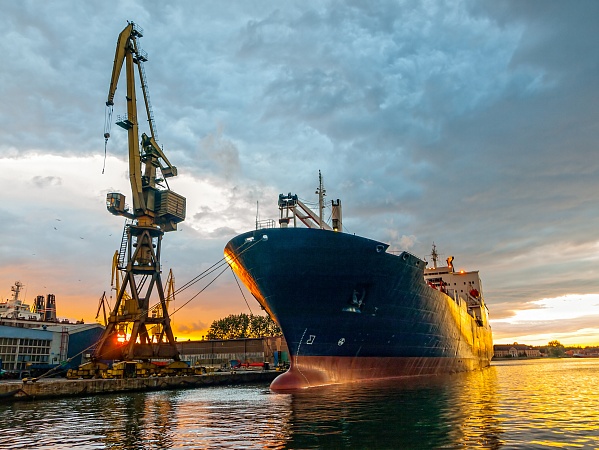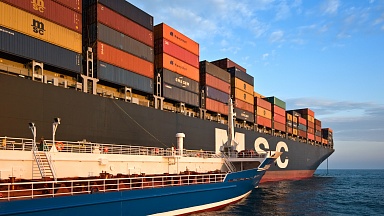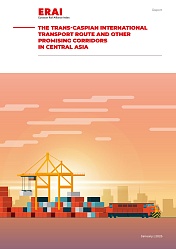China’s key southern container port of Yantian is expected to return to full operations today following several weeks of partial closure – although it will take weeks or even months to clear backlogs of cargo, freight sources warn, especially as peak season approaches.
Following almost a month of partial closures due to local Covid-19 outbreaks, Yantian International Container Terminals (YICT) operator Hutchison Ports yesterday told customers that “with the full support of relevant government departments and on the premise of strict epidemic prevention, Hutchison Ports Yantian has taken proactive measures to steadily resume normal terminal operations. Currently, Covid-19 has been effectively under control in the port area, and the operation capacity of the terminals have steadily recovered. It is now decided that from 00:00 on June 24, Yantian will resume full operations.”
It said all berths – including the West Port area – “will essentially resume normal operations”, noting that “the number of laden gate-in tractors will be increased to 9,000 per day, and the pickup of empty containers and import laden containers remain normal”.
And it said the arrangements of accepting export laden containers will return to normal, with export laden containers accepted within 7 days of the vessel’s estimated time of arrival (ETA).
Hutchison said Yantian “will continue to strictly implement epidemic prevention, control measures and promote production in a safe and orderly manner”.
Freight forwarding customer Norman Global Logistics, said the announcement “is good news for local business and shippers with cargo in the region, who have been waiting for an improvement in Yantian’s productivity. However, even with the increased efficiency at the terminal, it will take weeks to work through the backlog of container stacks in the terminal, with productivity impacted across Shenzhen, Chiwan, Shekou, and Nansha.”
It said its team in Asia was “monitoring the evolving situation in Yantian and South China ports, working closely with colleagues to mitigate its impact on our customers and providing alternative solutions where appropriate or necessary”.
Queue of vessels
Container shipping industry commentator Lars Jensen, CEO of shipping consultancy Vespucci Maritime, also welcomed “some good news from Yantian”, but warned that “even with the terminal itself back to normal operation, this does not instantly normalise the situation. There is a considerable queue of vessels waiting to be serviced – and the queue can be said to be ‘artificially short’ with the many port omissions both executed and still planned into July from the carriers.”
Jensen continued: “Furthermore there is a huge backlog of cargo to be handled – which, essentially, is cargo now on top of all the other normal flow of export cargo out of Asia.”
While, detailed statistics are not available, he said a “ballpark estimate can be made” on the basis of YICT handling 13.3 million TEU in 2020, equivalent to an average of 36,400 TEU per day.
With the terminal operating at around 30% of capacity for much of the past month, “this means an estimated shortfall of 25,500 TEU/day. The problem has lasted for some 30 days – i.e. a shortfall of 765,000 TEU of handling”, Jensen calculated.
With the terminal handling record load of 45,800 TEU/day in August 2020, “at the record load, they could clear the backlog in 17 days – but that is before taking account of the fact the normal cargo flow also needs to be handled”, Jensen highlighted.
82 days to clear backlog
“If we assume normal flow to be 36,400 – in line with average – then there is an excess capacity of 9,400 TEU/day up to the record performance with which to chip away at the backlog. In this case, it will take 82 days to clear the backlog.”
Jensen said those numbers were very approximate, and the “reality will be somewhere between these extremes. And another bottleneck will be the available vessel capacity in Asia as deep-sea services are already quite full.”
Other industry insiders questioned how much the recent vessel diversions to other ports in the region, such as Nansha, would have on these estimates.
Jensen responded: “To some degree, you see cargo being diverted through such other ports, which can help somewhat with the excess cargo pile – and this has also been done over the past few weeks. The problem here is that this also leads to congestion problems in these ports, hence impacting the normal flow of cargo.”
Indeed, another freight source yesterday highlighted that nearby Nansha port in Guangzhou was reported to be “stopping operations – if true this will also cause issues where shippers have tried to divert”.
Optimistic estimate
A cargo sourcing at Yantian International Container Terminals said he “can’t fully agree” with Jensen’s backlog assumptions, adding: “We will try our best – see how we go.”
And one Shanghai-based forwarder commented: “As long as the terminal deploy more internal trucks – all-hands-on-deck mode – to maintain the high OEE of quay cranes and RTGs, I also believe YICT can clear the backlog earlier than the expectation.”
However, others believe the estimates could understate the length of time the catch-up may take. One European import manager noted that the estimated 82 days to clear the backlog would only happen “if there is no any new ‘black swan’ ahead” – a reference to how vulnerable the ocean freight chain has been in recent months to any further disruptions.
And a Shenzhen-based global logistics supervisor for a major international retail group noted: “Considering the summer peak is coming, 82 days is a really optimistic estimation.”
Damage ‘already done’
Commenting last week on the wider impact of the disruptions in southern China, the world’s largest container line Maersk said the damage to already-disrupted supply chains had already been done. Maersk noted: “Fighting to get reliability back into operations and services back on schedule after the Suez incident in March, the port congestion in Yantian, with neighbouring ports Shekou and Nansha also affected, is an added pain at a time where global supply chains are already stretched.”




